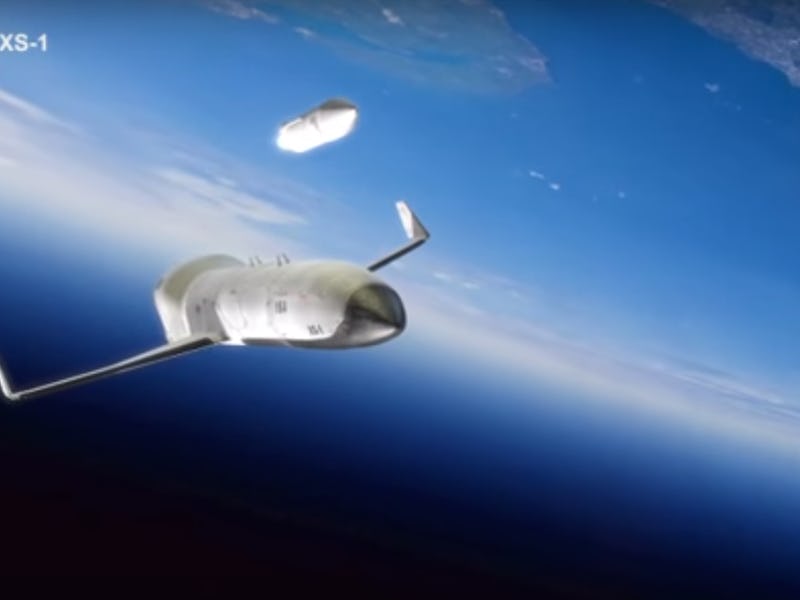Boeing's Experimental XS-1 Will Shape How We Fight Wars in Space
A vehicle capable of going into orbit, dropping satellites, and returning to Earth could save billions.

Even Elon Musk has tried and, so far, failed to design a vehicle capable of being launched into space, accomplishing a mission, and then returning to Earth for re-use. But the military is giving it another push, investing in production of an Experimental Spaceplane that could shape the way we wage wars in space.
Defense Industry Daily reports that DARPA has awarded Boeing a $6.6 million contract modification to develop the XS-1 Experimental Spaceplane. If successful, the engineers will produce a reusable, unmanned craft capable of ferrying satellites to low-earth orbit. America spends about $40 billion annually defending its space turf, and a big chunk of that is keeping its satellite network up and running.
The XS-1 would slash the cost of launching large satellites, being able to put 10 into orbit in as many days for less than $5 million per flight. Small satellites have commonly been put in orbit as part of larger launches, but space shuttles can cost as much as $450 million to get off Earth. It would also be a hell of a lot faster, cutting out years of planning that go into most launches.
For now, this is just an insurance policy, but when war with China finally does break out, and they blow up our communications satellites, we could drop in a fresh string in weeks instead of months. Terrorist group wants to scramble a spy satellite while they move uranium? We can have it back before the West Coast gets nuked into the Pacific Ocean. Or at least that’s worst-case scenario — the only kind worth planning for.
All of this is time and money we can turn around into investing in even more glorious space war hardware. Maybe it’s time to revive that petition for Obama to build a Death Star?